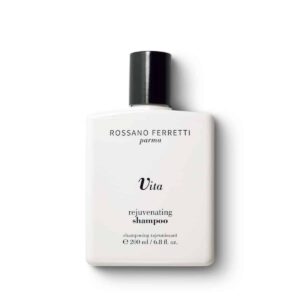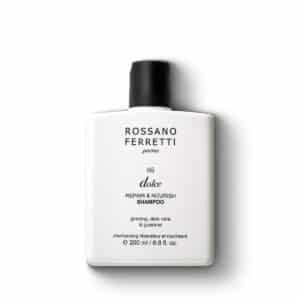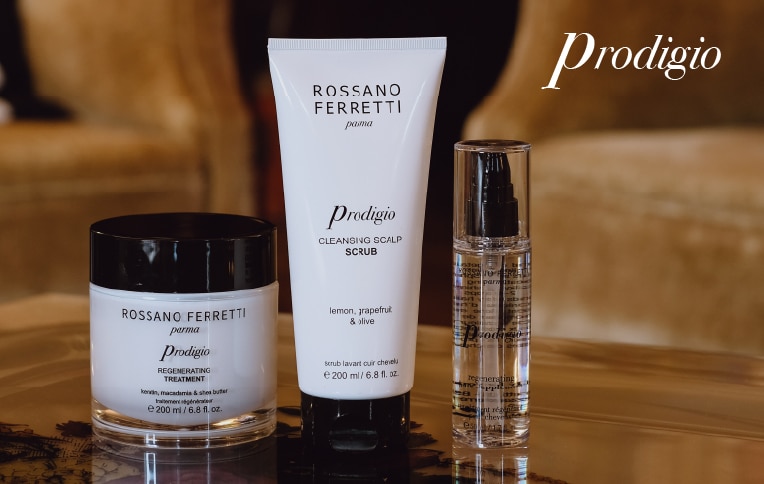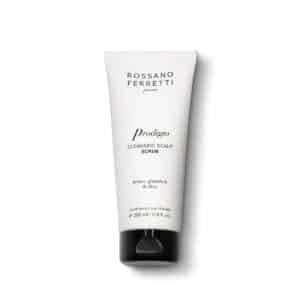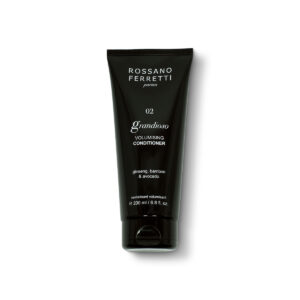Understanding hair type and textures
If you’ve been using luxury haircare products without seeing premium results, it could be that you’re not matching the right formulas with your hair type.
Much like understanding your skin type is important for implementing an effective skincare routine, figuring out what type of hair you have can play a huge role in helping you to reach your hair goals.
Now, by just looking at your hair you’ll be able to recognise some obvious characteristics. For example, is it straight, wavy, curly, or coily? However, there are a few other factors to consider in pinpointing your unique hair type.
Below is everything you need to know to understand hair types and textures, and exactly define your hair. We’ve tried to communicate the information so that it can be easily absorbed, leaving the complex “science” bits for another day.
Vita Rejuvenating Shampoo
Grandioso Extra Volume Shampoo
Dolce Nourishing Shampoo
Prodigio Regenerating Treatment
Let’s talk hair textures
The next time you wash your hair, allow it to air-dry without any products in it. This will help you to define the natural shape or pattern (hair texture) of your strands.
You can use the following as a guideline:
- If your hair dries straight without a bend or curl, then you have straight hair (type 1).
- If your hair dries with a slight curve or “S” shape, then you have wavy hair (type 2).
- If your hair dries with a defined curl, then you have curly hair (type 3).
- If your hair dries to form tight curls or spirals, then you have coily hair (type 4).
Each of these hair textures will need special care and attention to enhance the best characteristics.
Bonus tip: Take our free online hair quiz to discover your own personalized hair care routine.
What about hair density?
Hair density refers to the thickness of your hair strands, which generally falls into 3 categories:
- Thin (fine)
- Medium
- Thick (coarse)
The density of your hair will affect how well it will hold styles and react to certain products.
A quick and easy way to see which category your hair falls into is to take a strand of your hair and lay it next to a piece of sewing thread. If your strand is thinner than the sewing thread, then you have thin (fine) hair. If it’s thicker than the thread, your hair will fall into the thick (coarse) category. Anything in between them would be medium.
You will also find that fine hair can’t hold curls very well whereas medium hair is relatively easy to style and can hold curls for a longer period (thin/medium hair can easily be volumised when you apply the right products, the Grandioso collection is great for thinner hair). Thicker strands are super easy to curl, but because they are less supple, it can be tricky to style them or get them to hold their shape.
**Tame your coarse or curly locks using our Intenso collection. These products are created to make your strands more supple so that they can retain a defined shape.
What’s my hair porosity?
Hair porosity isn’t visible and is therefore often overlooked as a key factor in determining hair type. However, knowing your hair’s porosity can be a game-changer in determining which products you should be putting on your hair for effective results.
But what is “porosity”?
Porosity refers to your hair’s ability to absorb moisture and product.
To discover what kind of porosity your hair is, you can do the following simple experiment:
Place a single strand of hair into a glass of water.
- If it sinks to the bottom, your hair has high porosity (which means it soaks in a lot of moisture).
- If your hair sinks but doesn’t touch the bottom of the glass, it has well-balanced porosity (which means that it absorbs just enough moisture to keep it healthy).
- If your hair floats on top of the water, it has low porosity (which means it does not absorb moisture easily).
Now, you’d think that hair with high porosity would be ultra-moisturised all the time. But this is not the case. This type of hair absorbs moisture quickly because of gaps or tears around the cuticle. This means that it loses moisture just as fast as it absorbs it. The result is dry, brittle hair that’s prone to breakage.
What do I do if I have hair with high porosity?
If you fall into this category, we suggest that you avoid heat styling as often as possible. Products with harsh chemicals are also a “no” because they can continue to dry out your hair. Instead look for natural deep-hydrating hair masks, hair oils, and leave-in treatments that will infuse your locks with moisture while sealing the cuticle to prevent moisture from seeping out again.
What do I do if I have hair with low porosity?
If your hair has low porosity, it means that your cuticles are blocking moisture from seeping into your strands, and you will need to use a product that helps moisture move through the shaft.
**Try our award-winning Dolce collection for hair that is in dire need of hydration. This range is suitable for all hair types and textures and uses ingredients such as Keratin and Hyaluronic acid to ensure that moisture deeply penetrates your strands.
Get to know your scalp
The fact is, if your scalp isn’t in good shape, then your hair won’t be either. So, never ever underestimate the power of good scalp care!
To see what type of condition your scalp is in, we suggest that you inspect it the day after a wash. If your roots appear lifeless and greasy, then you most likely have a scalp that’s prone to oiliness. If this is the case, a deep cleansing scalp scrub may be just what you need to remove impurities, product build-up, and excess oils.
If you find that your scalp flakes, chances are that it’s dry and in need of nourishment. A flaky scalp can also often be quite sensitive, so you’ll need to be gentle in your approach. We suggest a sulphate-free hydrating shampoo that will clean your hair and scalp without stripping it of natural nourishing oils.
But what if my scalp is both oily and flaky?
This happens. If your scalp is in a state of disarray, it may be the result of product and oil build-up due to infrequent or improper washing. If this is you, then we urge you to invest in our luxury haircare range called “Prodigio”.
The Prodigio range has been designed to restore balance to your hair and scalp, reviving it so that your locks are in optimal health.
In the range you will find:
- Regenerating Oil – a nourishing oil that renews damaged cells and seals split ends.
- Regenerating Treatment – an intense pre-wash treatment that replenishes and renews your hair and scalp.
- Scalp Scrub – a soothing cleansing formula for oily and flaky scalps.
What about hair-fall and ageing hair?
Ageing hair and hair-fall tend to be classified as conditions more than hair types. Nonetheless, if your hair falls into one (or both) of these categories, it will help to pair your locks with products that will nurture them.
If your locks are prone to hair-fall or are ageing and need a rejuvenation boost, then use our Vita Collection for the best results. This range uses natural ingredients to bring vitality back to fragile and depleted hair – it’s a winner!
We hope you found this information helpful! If you are still unsure, please do make an appointment with one of our professional stylists who will study your hair to determine its type or contact our customer care team ([email protected]) for further advice. We are happy to help! Having a thorough understanding of your hair is necessary to maintain locks that are flawless and naturally beautiful.
Take our free online hair quiz to discover your own personalized hair care routine and enjoy healthy and nourished hair with Italian Designer Haircare.





